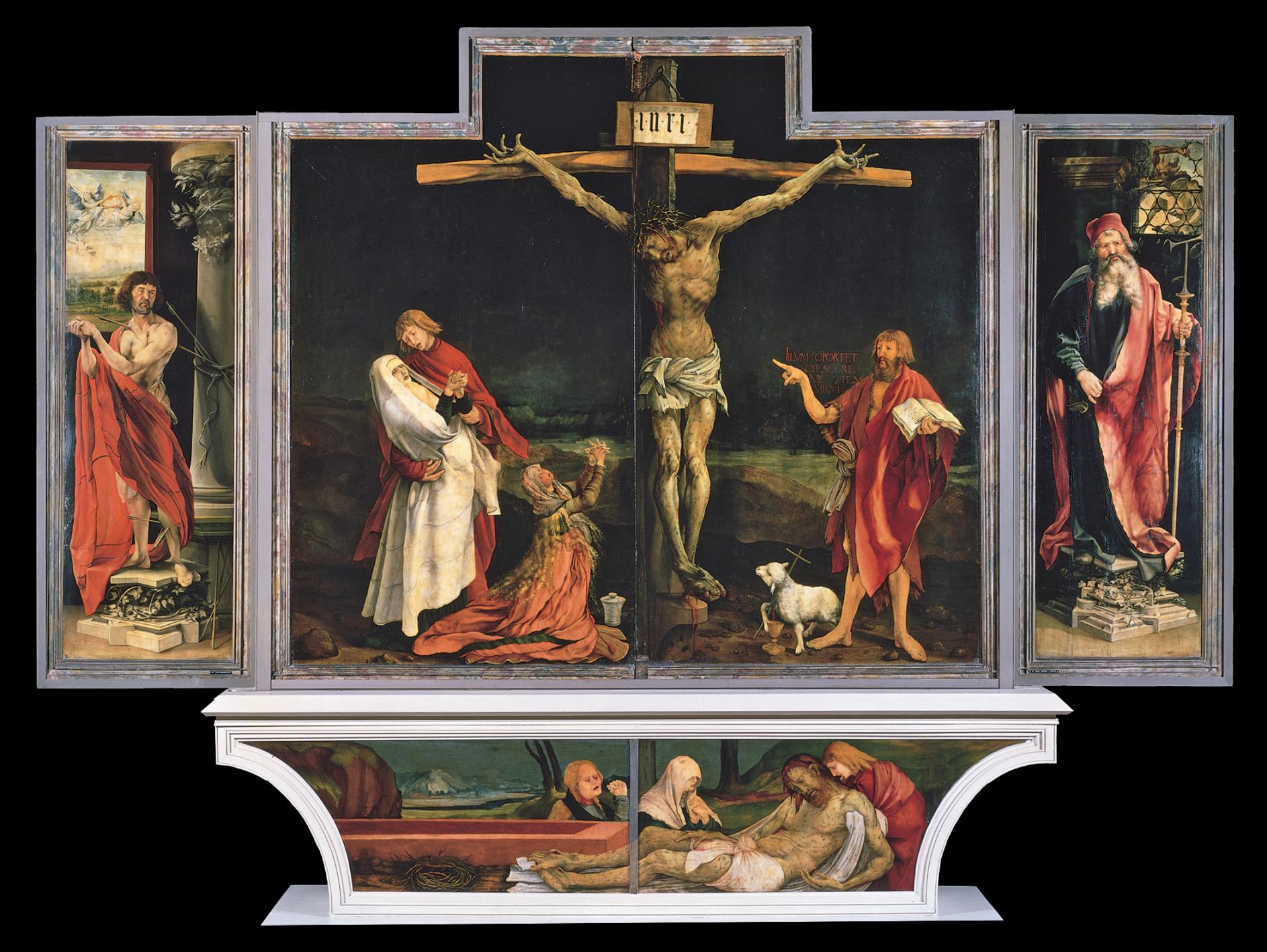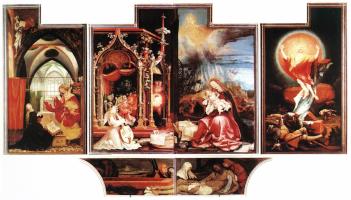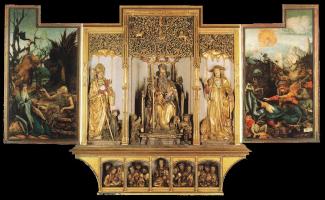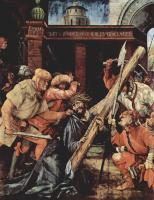Matthias Grünewald
Grünewald was, with Dürer, one of the greatest German painters of the sixteenth century. Little of his life was recorded and few of his works have survived, but The Isenheim Altarpiece is undoubtedly a painting of genius. It was commissioned by the monastic order of St Anthony for their hospital church at Isenheim, near Colmar. The altarpiece has two themes: the narration of the stories of the Annunciation, the Nativity, the Crucifixion, the Lamentation and the Resurrection ; and the depiction of scenes from the lives of the patron saints of the monastery. It is made up of an elaborate series of folding wings, and The Crucifixion can be seen on the outside when all the wings are closed.
 Grünewald has created a truly terrifying painting, perhaps the most terrifying
in Christian religious art. The scene is bleak and dark, and the cross is set
in a rocky, barren landscape. To the left, in white, the swooning Virgin Mary
is supported by St John, into whose care Christ had entrusted her; Mary
Magdalene, her long golden hair rippling down her back, kneels at the foot of
the cross, her hands raised in prayer; and to the right St John the Baptist
points to the figure of the dead Christ. Framed by his arm is the inscription
in Latin, ‘It is fitting that He increase and I diminish.’ The lamb at his feet
holds a thin cross of reeds, and blood, representing the Holy Sacrament, pours
from a wound in its chest into a golden chalice.
Grünewald has created a truly terrifying painting, perhaps the most terrifying
in Christian religious art. The scene is bleak and dark, and the cross is set
in a rocky, barren landscape. To the left, in white, the swooning Virgin Mary
is supported by St John, into whose care Christ had entrusted her; Mary
Magdalene, her long golden hair rippling down her back, kneels at the foot of
the cross, her hands raised in prayer; and to the right St John the Baptist
points to the figure of the dead Christ. Framed by his arm is the inscription
in Latin, ‘It is fitting that He increase and I diminish.’ The lamb at his feet
holds a thin cross of reeds, and blood, representing the Holy Sacrament, pours
from a wound in its chest into a golden chalice.
The most remarkable feature of this deeply disturbing painting is the nearly central figure of Christ himself nailed to the cross. The placard above his head bears the letters INRI, the initials for the Latin Iesus Nazarenus, Rex Iudaeorum, Jesus of Nazareth, King of the Jews. Blood still gushes from the sword wound in his side and his head has fallen limply on to his shoulder. His body is thin, and distorted with the stiffness of death; the fingers grope upwards like frozen claws. Splinters and thorns pierce his skin, evidence of the beating he received, and his flesh has a greenish pallor, the feet already turning black with putrefaction. The horizontal beam of the cross is dragged down slightly by the dead weight of his body.
The agony of the Crucifixion is depicted starkly and simply. There is nothing romantic about it; the harsh reality of the event is portrayed with a passionate accuracy that makes it all the more heartrending.




